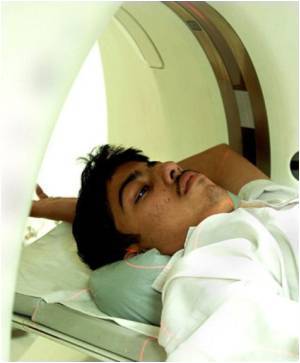At the annual meeting of the Radiological Society of North America (RSNA), an expert panel met to thrash out safety aspects of medical imaging and ways to educate patients about risks and benefits.

"Medical imaging examinations are an invaluable, but complex, set of tools in the diagnosis and treatment of patients," Dr. Mahoney said. "With this panel, we hope to address recent concerns about imaging, clear up some misconceptions regarding risk, and inform the public about what's being done to ensure their safety when undergoing medical imaging exams."
The growth in medical imaging over the past two decades has yielded important and life-saving benefits to patients. Medical imaging has allowed millions of patients to avoid more invasive diagnostic and treatment procedures. However, overutilization of medical imaging examinations can be detrimental to patients by exposing them to unnecessary radiation. Between 1980 and 2006, the annual U.S. population radiation dose from medical procedures increased seven-fold, according to the National Council on Radiation Protection and Measurements.
"Imaging procedures conducted for the wrong reasons contribute to unnecessary costs and radiation exposure to patients," Dr. Hendee said. "Radiology is working to reduce unnecessary procedures, but some of the causes of overutilization are beyond radiology's influence."
Recent reports have drawn attention to the ionizing radiation associated with some imaging procedures, most notably CT. There is general agreement in the radiology community that certain imaging and radiation therapy procedures are associated with risks, which in each patient's case must be weighed against the benefit of the diagnostic information or treatment result one specific procedure may provide. Radiologists and medical physicists continue to work together to improve the safety of imaging exams by lowering radiation dose without sacrificing diagnostic quality. Efforts are also under way to better monitor patients' cumulative radiation exposure from multiple imaging exams over time.
To increase awareness of cumulative radiation dose and other radiation risks and to explore opportunities to improve patient safety through appropriate utilization, quality assurance and dose optimization, RSNA has partnered with the American College of Radiology (ACR), the American Association of Physicists in Medicine (AAPM) and the American Society of Radiologic Technologists (ASRT) to launch the Image Wisely™ initiative. Much like the Image Gently initiative did for pediatric radiology, Image Wisely was developed to educate imaging professionals, referring physicians and the public on the relative benefits and risks of medical imaging.
Advertisement
ImageWisely.org, directed at physicians and other medical professionals, was officially launched at RSNA 2010. The website's patient-directed content, which answers common patient questions about risks and benefits of medical imaging procedures, is available along with information on radiation exposure, contrast materials, anesthesia, radiation therapy procedures and other safety concerns on RadiologyInfo.org.
Advertisement
Source-Eurekalert









